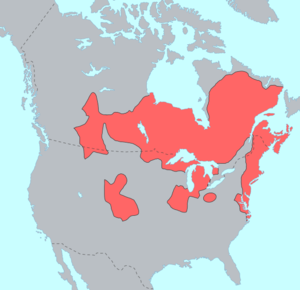Encyclopedia Dubuque
"Encyclopedia Dubuque is the online authority for all things Dubuque, written by the people who know the city best.”
Marshall Cohen—researcher and producer, CNN
Affiliated with the Local History Network of the State Historical Society of Iowa, and the Iowa Museum Association.
ALGONQUIAN LANGUAGE GROUP
ALGONQUIAN LANGUAGE GROUP. The Algonquian are the most varied, most widely distributed, and perhaps the most historically important of the Native American people of North America. They had dealings with the early European colonists almost as soon as the latter arrived. They were the first Indian peoples to make friends with the French in the north, and the settlers of Jamestown had to deal with the great confederation of King Powhatan, also of the language group. The various tribes extended from coast to coast.
Some version of the Algonquian language is native to nearly 80,000 present-day Native Americans of the United States and Canada. At one time, the language had over fifty different tribal variations.
In the Midwest, the Algonquian were the most numerous and held the largest part of the territory. In the region, only the Winnebago were neither Algonquin nor Iroquoian in tongue.
Prominent Midwest Algonquian tribes included the Menominee, Ottawa, Potawatomi, Objibway, SAUK AND FOX, Illini and Miami, the latter probably the most numerous in the region.
The Algonquian groups generally sided with the French, and so in many cases were treated more harshly when control of the region finally came to the British. As population of the region increased, they were forced to give up their lands by treaty and were gradually moved to the west. After the Black Hawk War of 1832, most of the Algonquin tribes had been removed. However, they left a lasting legacy in the language including such words as hominy, hickory, tomahawk, wigwam, woodchuck, terrapin, moccasin and hundred of Midwest place names such as Wapsipinicon.


